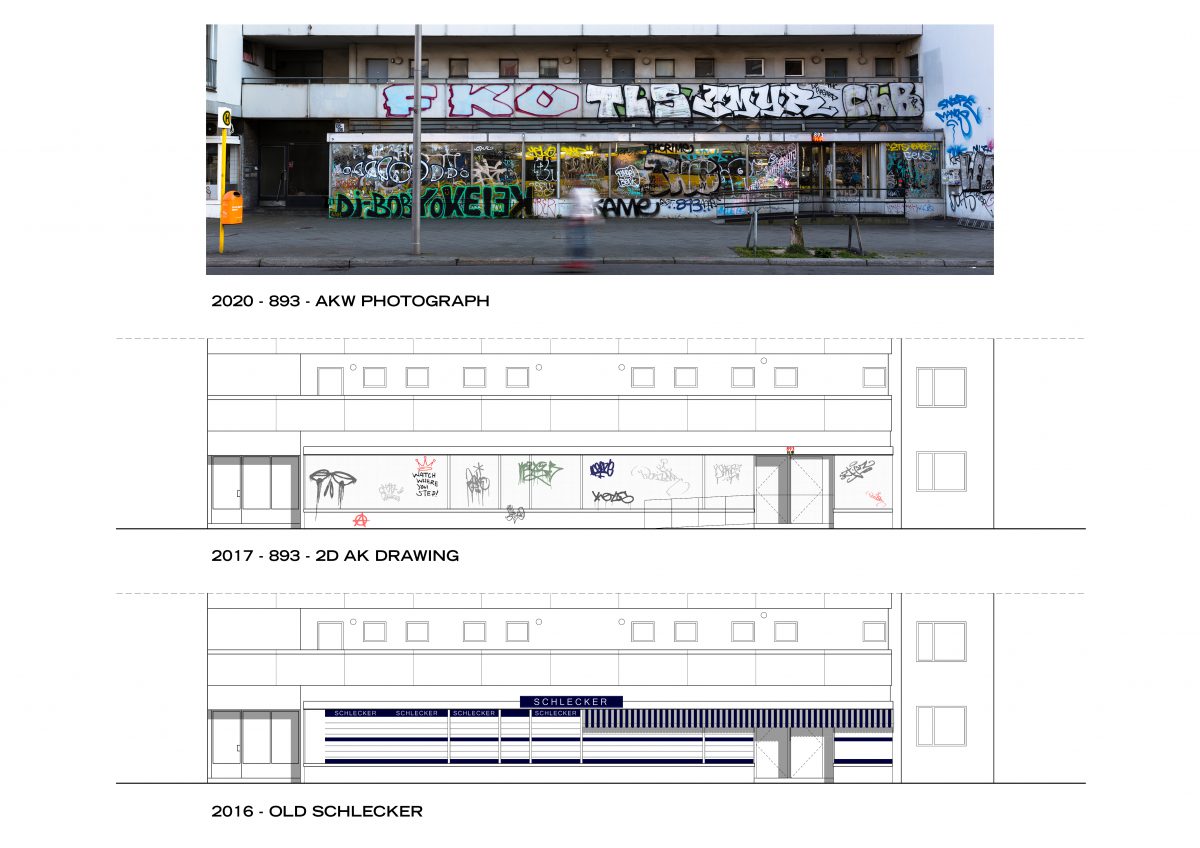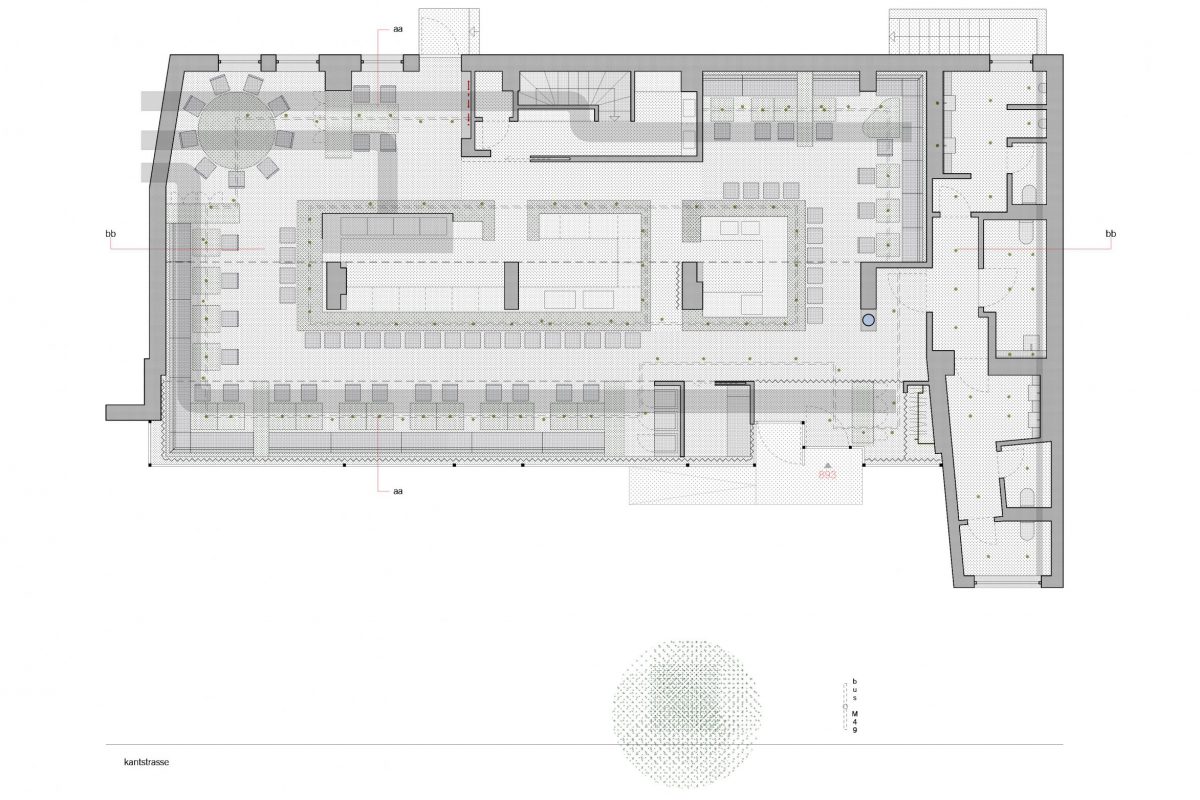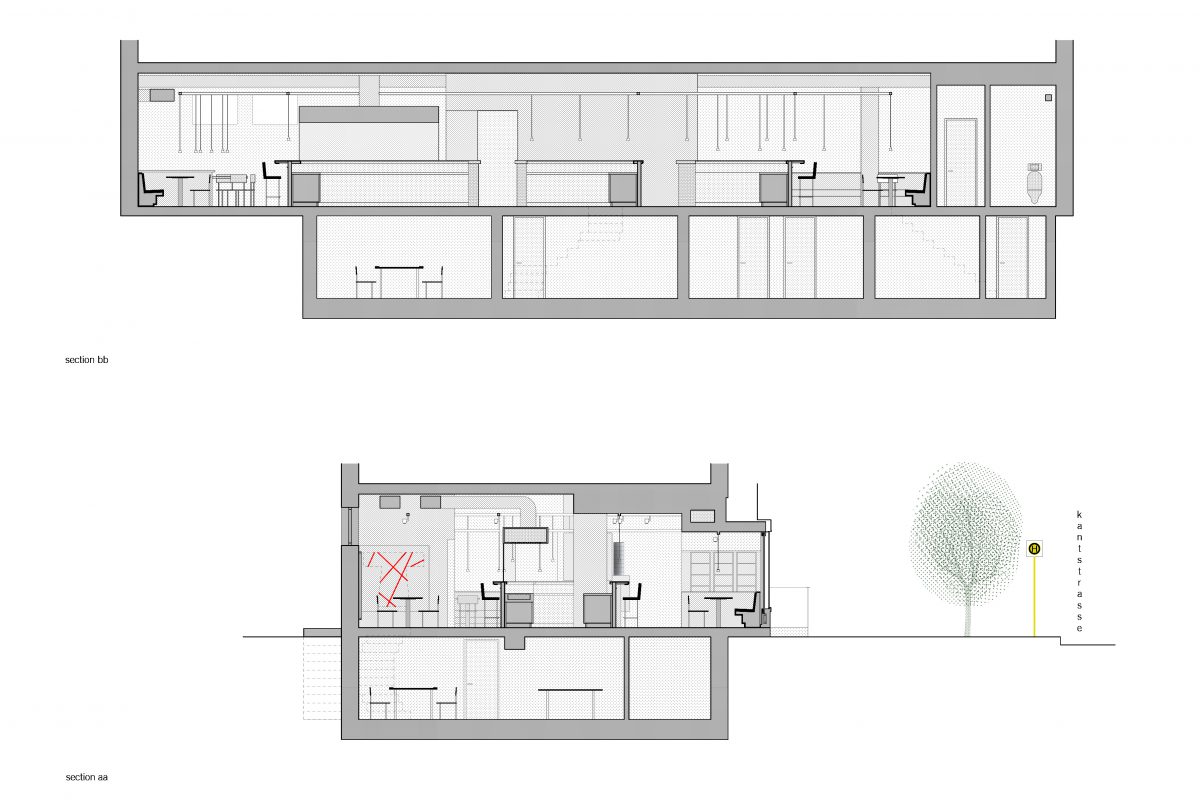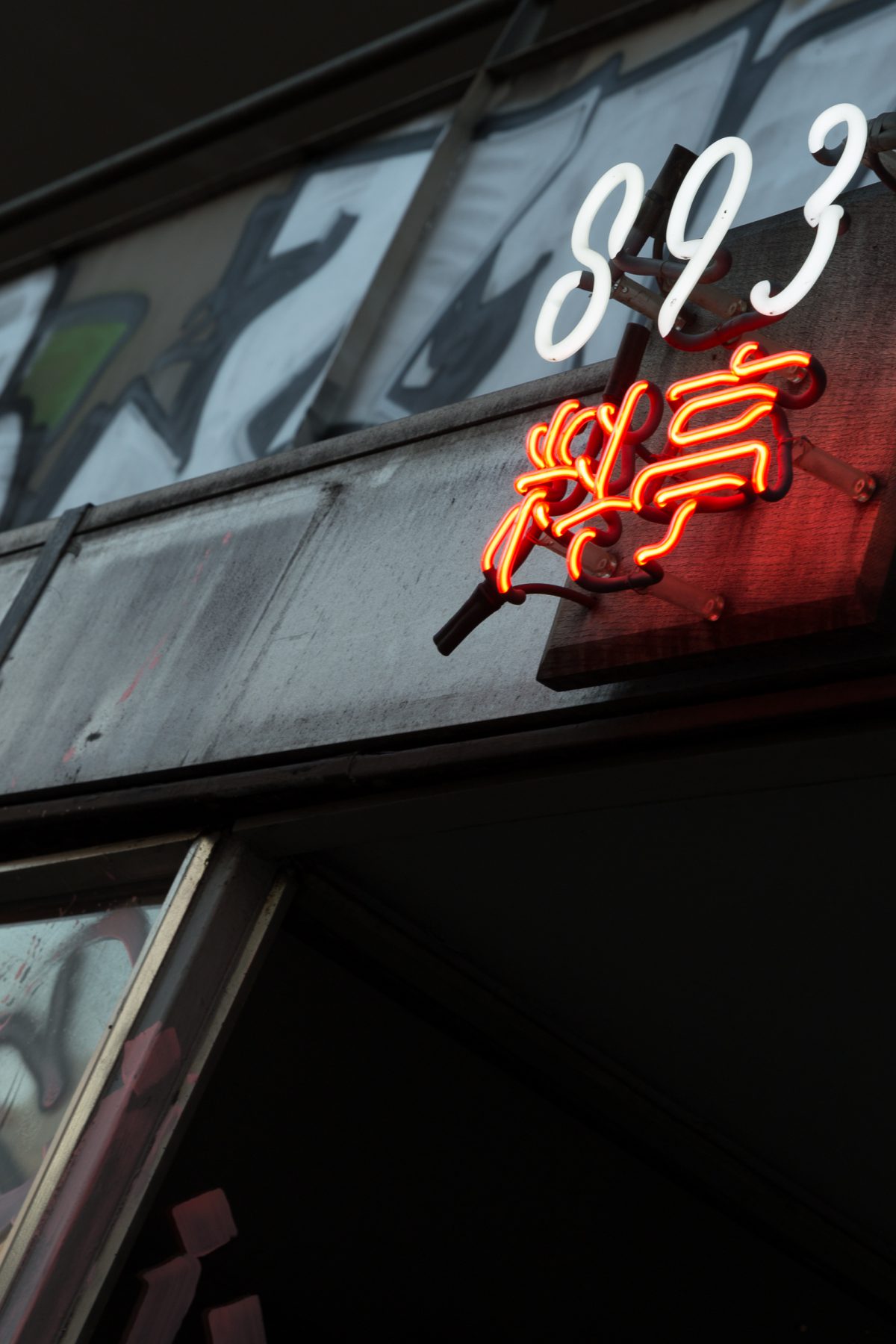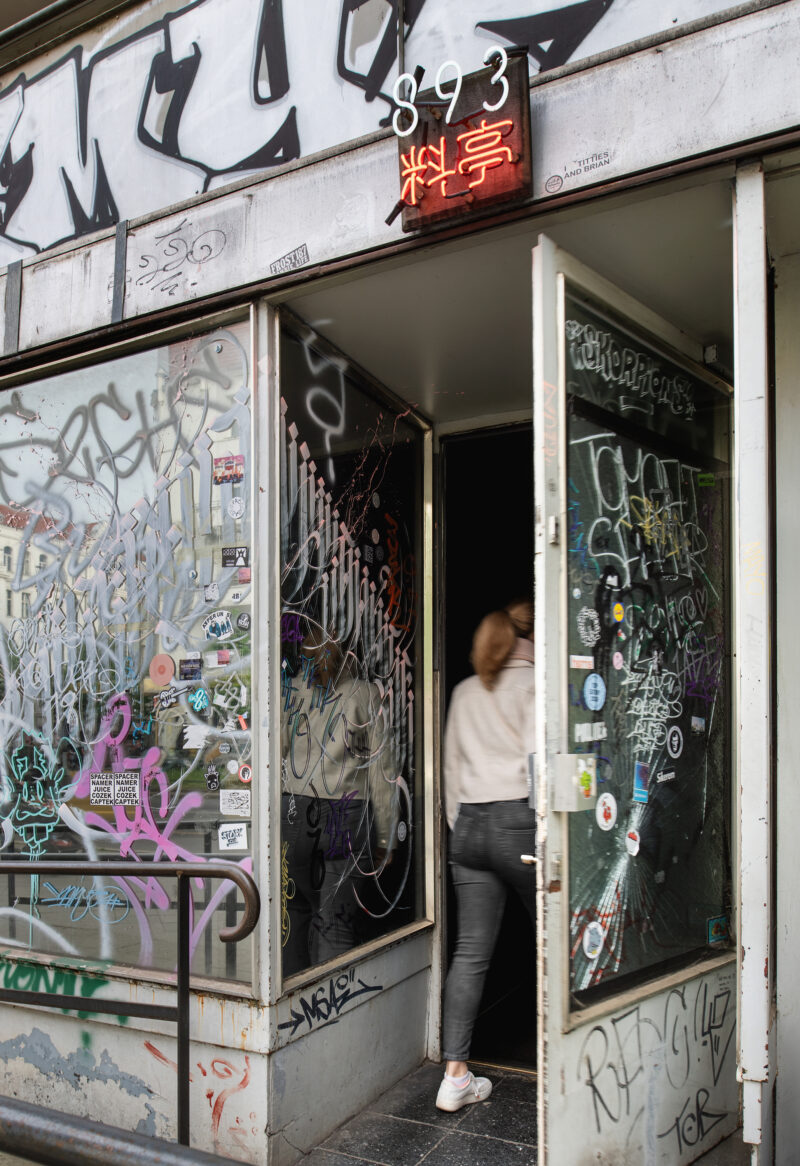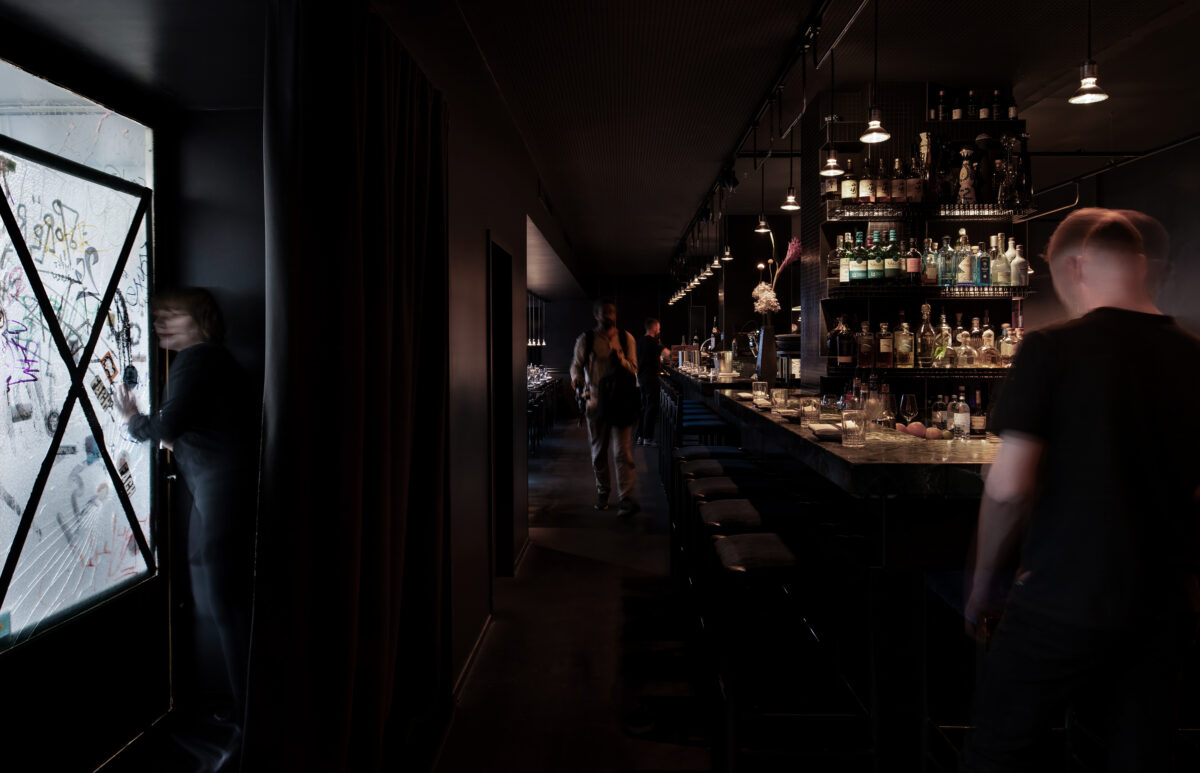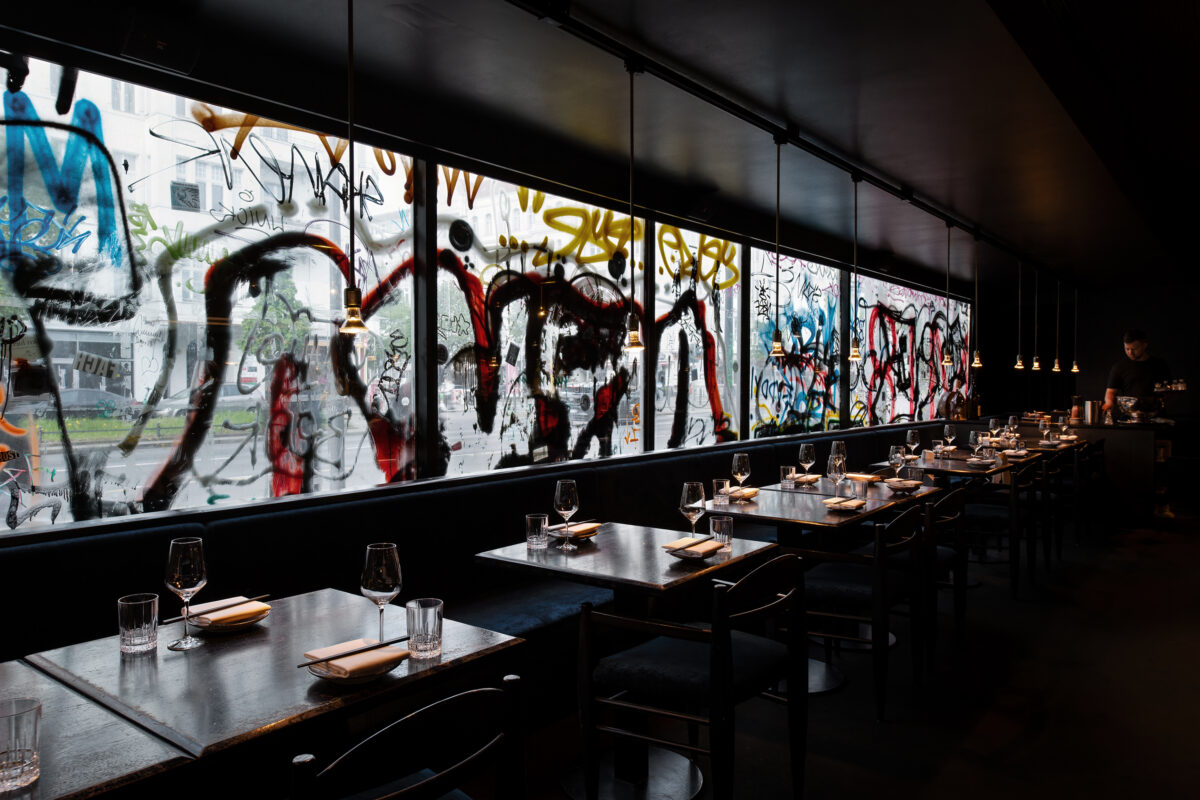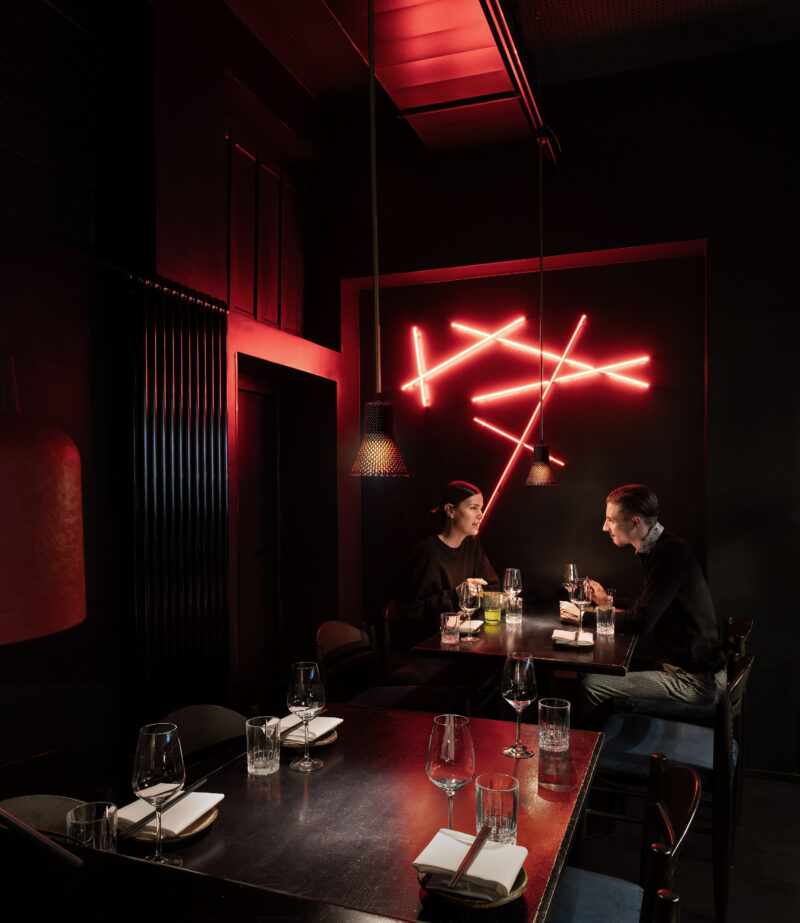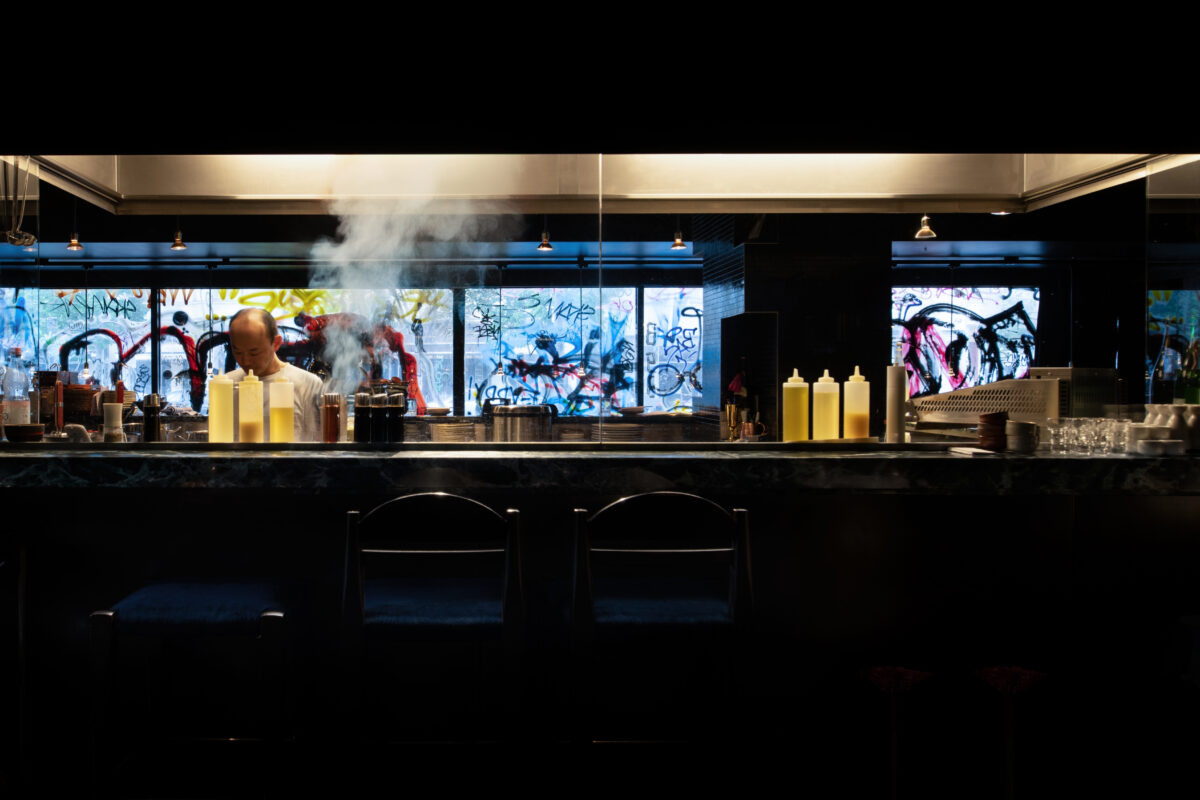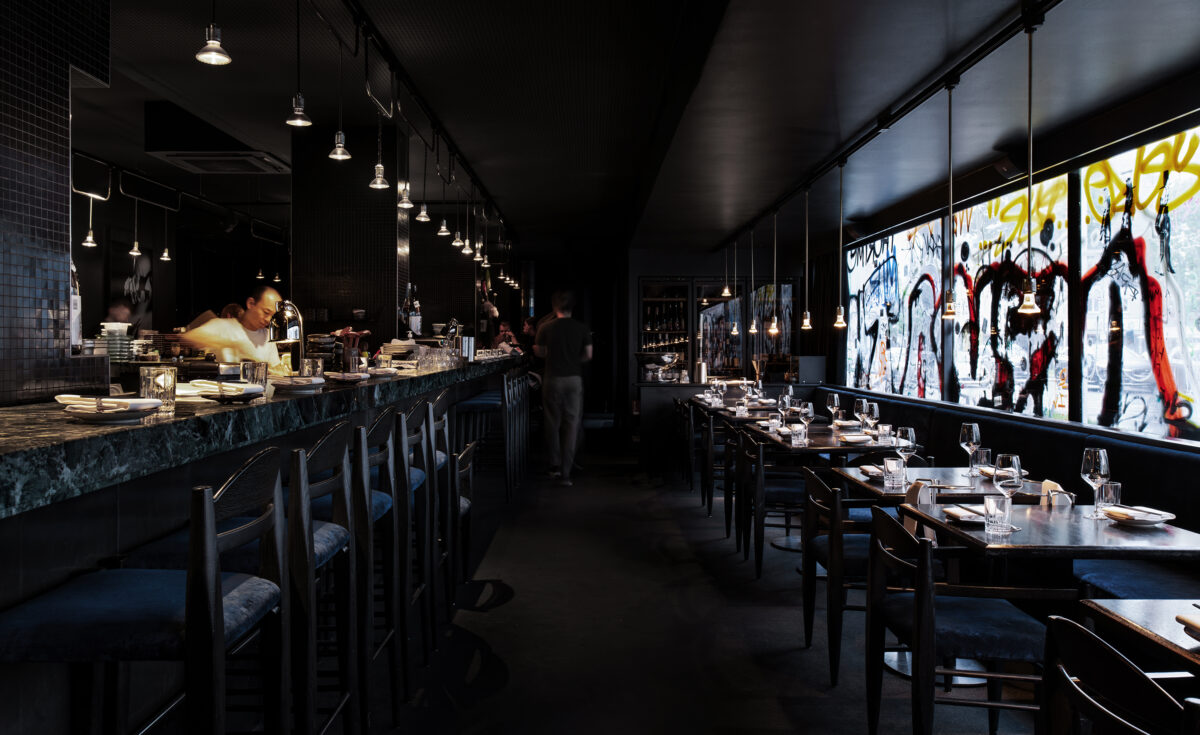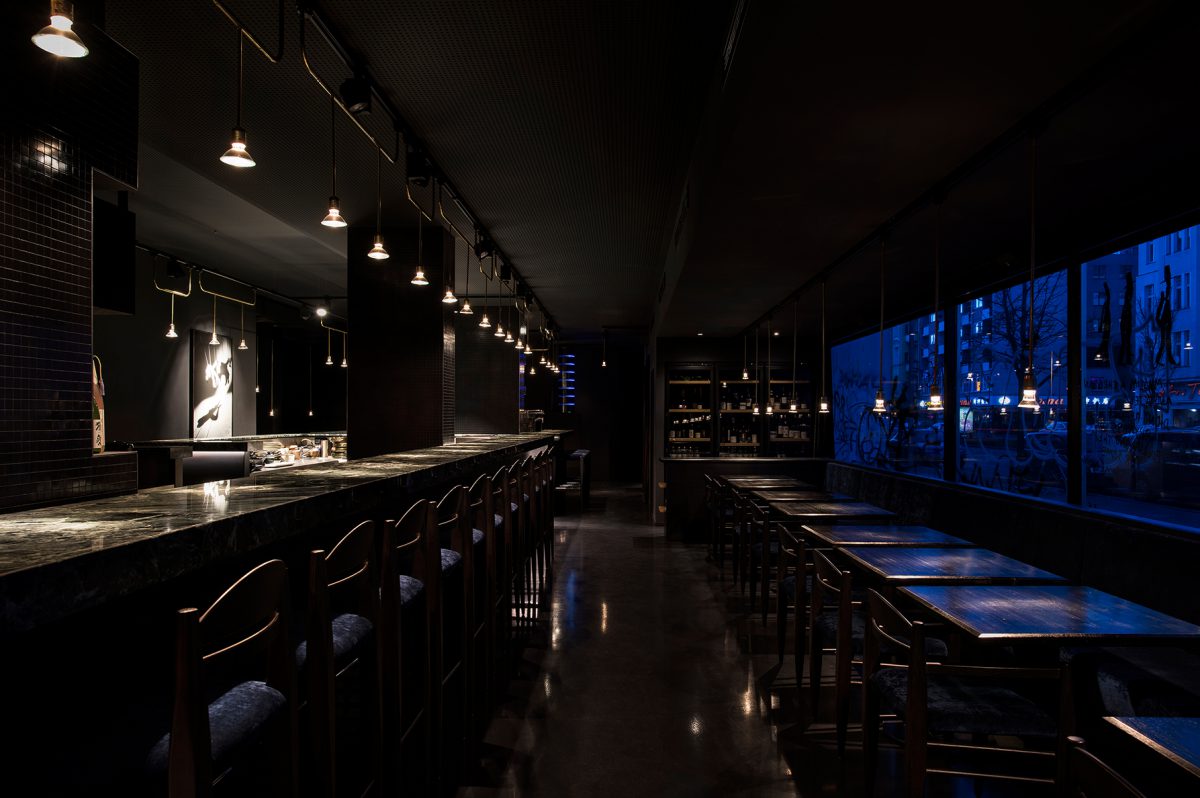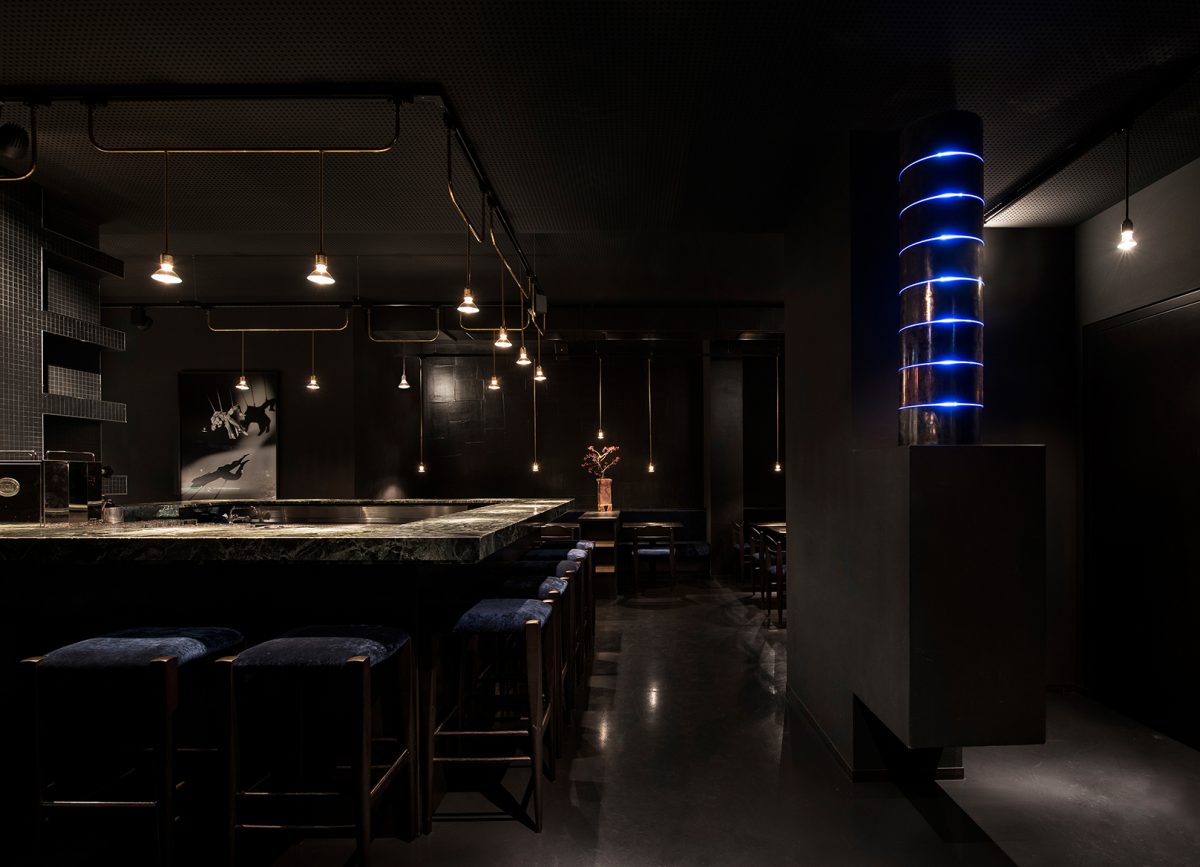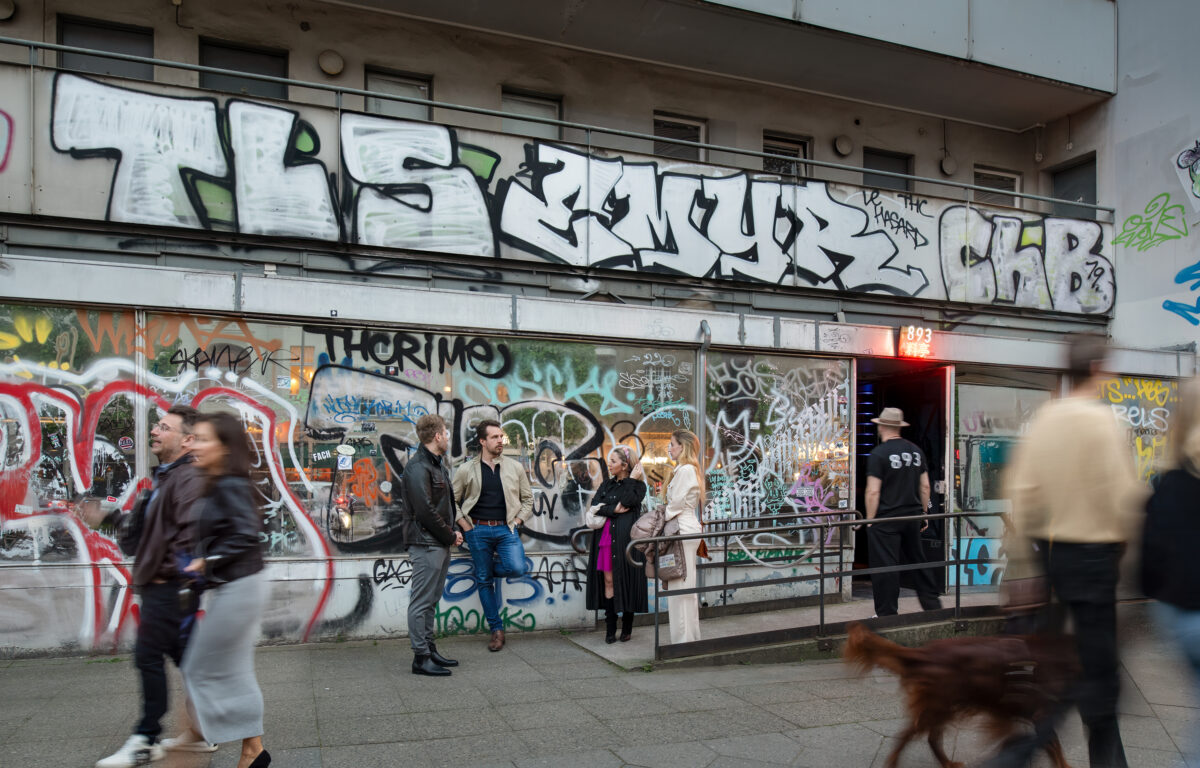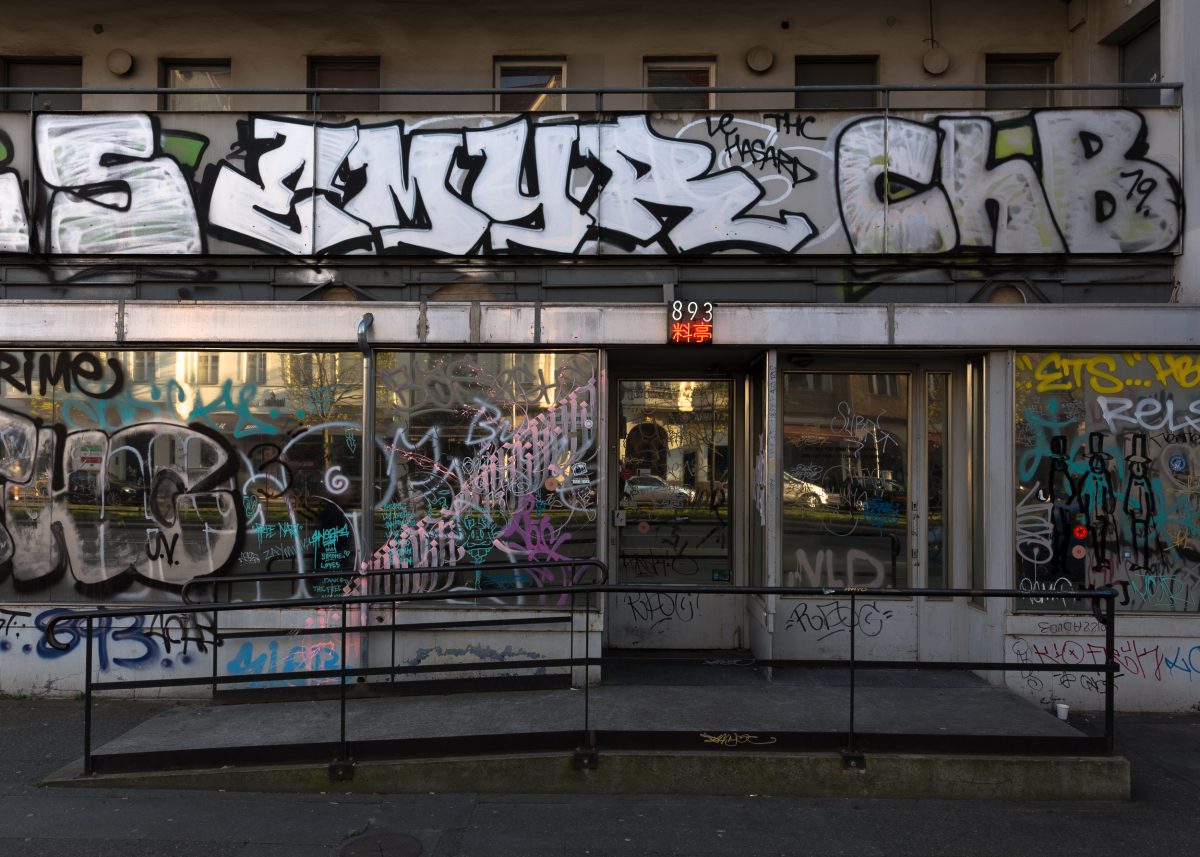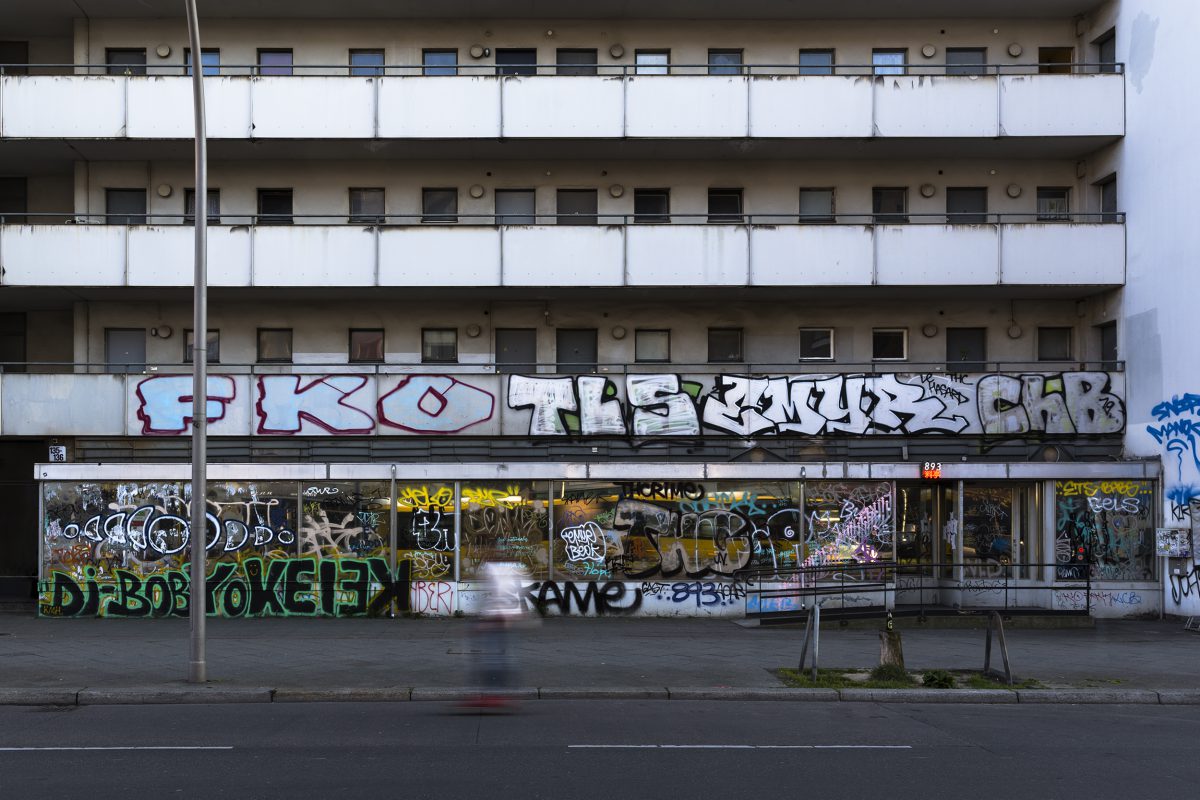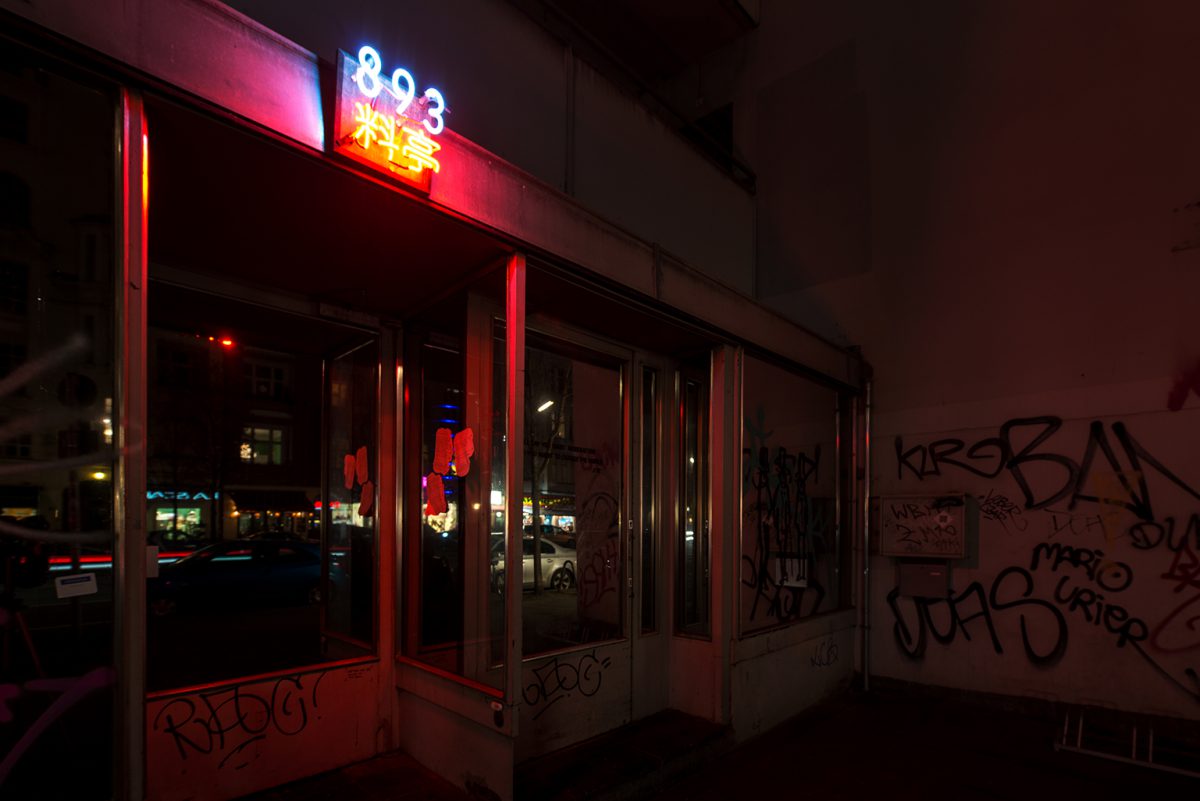893 RYOTEI, Restaurant, West Berlin, Germany, 2017
893 Ryotei occupies the storefront interior space of a 1960s Hans-Dieter Bolle structure – a former locus of the banal, a “Schlecker” drugstore. Its graffiti-scarred facade reflects a radical transformation – it is essentially tattooed. Mirrored surfaces create a disorienting interplay with the urban fabric.
The interior space inverts the expectation of Kantstrasse’s commercial bustle. An abstracted Yakuza tattoo, a symbol of hidden worlds, takes physical form. Inked patterns become textured surfaces – black expanses juxtaposed with subtly colored horizontal planes. The metamorphosis is jarring, challenging the perception of surface and depth. The history of the building lingers, repurposed and subverted.
Architect: ALLEN KAUFMANN Architekten
Photography: Yuzhu Zheng and Ann Katrin Warter
